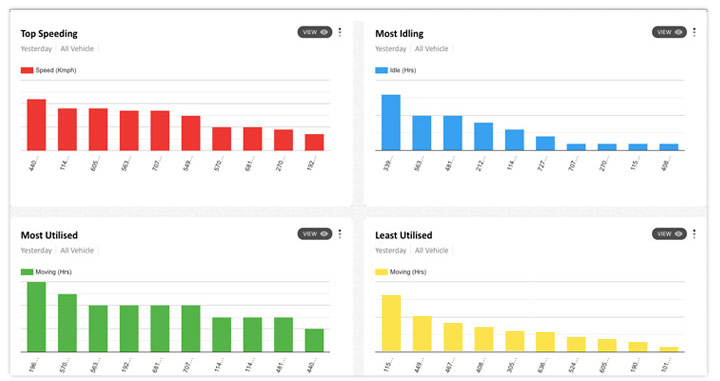Rising fuel prices are forcing the owners to keep a close watch on their fleet activities and ultimately fuel consumption.
Fuel is the second largest expense category and is an area of concern for most of the fleet owners across the world.
Uncontrolled fuel usage or theft can amount to a huge loss for fleet owners if these things are not kept under control and having control over fuel consumption lets the fleet owners reduce their operational cost to a large extent.
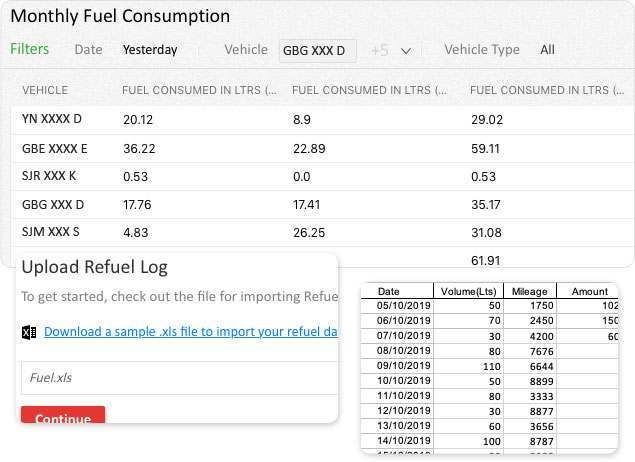
If the fuel usage is unexpectedly high at frequent intervals, it’s time to monitor the fuel usage and to keep a watch on your driver activities.
The easiest way to have fuel control is to implement a better fleet management system and install a GPS tracking device along with a fuel monitoring system for your fleets.
Fuel tracking sensors currently available in the market from manufactures like Ruptela, Italon and Omnicomm are most advanced and offer a host of features.
Features of Ruptela fuel sensor
- Remote configuration and updates
- Measurement accuracy of upto 99%
- IP68 certified
- Aluminium housing
- Galvanic isolation
Features of Italon fuel sensor
- Provides you with analog and digital outputs.
- Offers 99.5% accuracy
- Customizable sensor length.
- Maximum error percentage measurement – 0.4 %.
- Operating temperature range, -40 to +80 °C.
- Average life time – 8-12 years
Features of Omnicomm fuel sensor
- Provides you with analog and digital outputs.
- Offers 99.5% accuracy
- Sensor length from 700mm to 6000mm.
- Error percentage measurement – ±0.5% or ±1% (depends on model).
- Operating temperature range, -60 to + 85°C or -40 to +80 °C(depends on model).
- Average life time – 8-12 years
Find a compatible platform for fuel consumption sensor
Once you have finalised on the fuel consumption or tracking sensor, the next step is to find a platform or fuel tracking software that supports all the features of your sensor and provides reliable information that is sufficient enough to monitor and analyse your fleet’s fuel consumption.
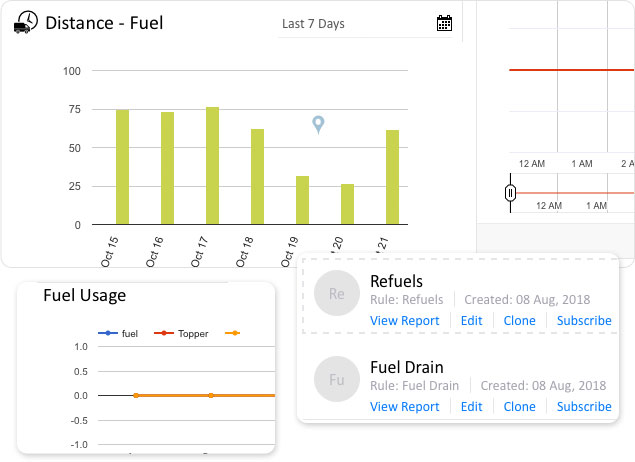
A fuel consumption sensor attached to a GPS device can provide informations viz.,
- Refuelled quantity: Verifying the fuel bills submitted by drivers has never been an easy task. Providing fake bills to earn an ‘extra income’ is a normal thing among drivers and preventing this is a big challenge for Fleet owners.Getting to know the exact refuelled quantity will make your job of verifying the bills easier, and the best way to achieve this is to install a fuel consumption sensor.
- Refuelled or fuel drained date, time and location: Information or data received from the fuel tracking system provides you with details such as date, time and location of refuel or drain. A fuel sensor will be able to provide information on fuel volumes in certain periods of time.
- Actual fuel usage: The expected fuel usage and the one reported by driver can be different at times and the information from the fuel tracking system can hint you on a possible fuel theft or unnoticed fuel leakage.
- Drained fuel quantity: Information on the fuel level irregularities or sudden change in the fuel quantity are things to be watched for.
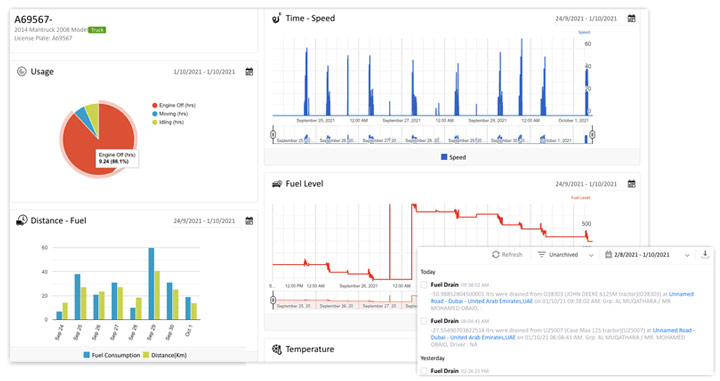
Sudden change in the fuel quantity may occur due to any of the following:
a) Road conditions: Movement of your fleets on damaged roads or roads with potholes can be one of the reasons for sudden change in fuel level. Sensors or fuel monitoring systems detect the sudden change in fuel and generate information on the fuel level which can be misleading at times.
b) Bad mobile or GPS network: Fleets passing through an area where no proper mobile or GPS network is available can also lead to incorrect information on fuel level.
For example, a fleet travelling though area with no or very less network
coverage fails to send real time information and once the fleet is back in an area with a proper network, it will start sending information on fuel level with a sudden change and can be interpreted as a possible fuel theft.
c) Fuel theft or pilferage: Fuel theft or pilferage could be another reason for sudden change in fuel level. Using a fuel monitoring system to track real time fuel usage can help you prevent this.
Apart from the above mentioned information, features in the fuel monitoring software should enable users to set alerts on refuel alerts, fuel drain alerts, sensor disconnection alerts etc.,
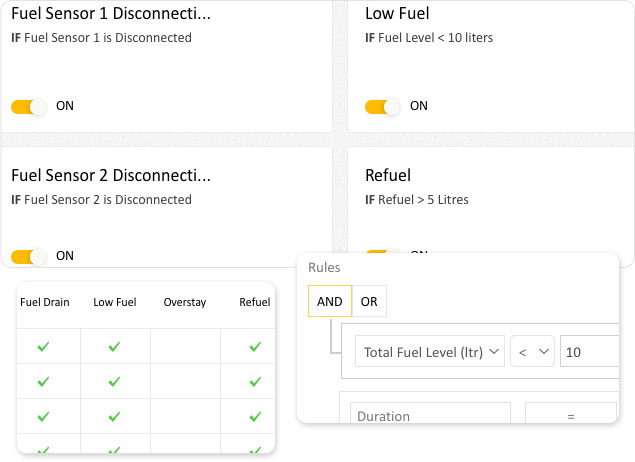
Refuel alerts: One should be able to set alerts on any instance of refuel. Once an alert is set and a refuel happens, the system will generate an alert with the refuelled quantity, date and time which allows the fleet owner to have detailed information on the instance.
Fuel drain alerts: Once a fuel drain alert is set, the system will generate an alert (if there is a sudden change in the fuel level above a certain set limit) along with information on the drained fuel quantity, and date and time of the instance.
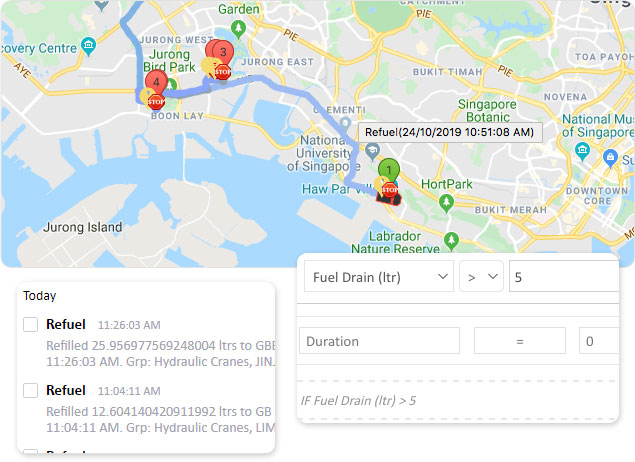
Fuel consumption sensor disconnection alerts: There were many instances where drivers manually disconnect the fuel consumption sensor to stop the real time fuel level getting tracked.
A disconnection alert will allow the fleet owner to receive an alert in the event of fuel sensor disconnection.
Advantages of fuel consumption sensor
Monitor real-time fuel level: An advanced fuel consumption sensor provides you with accurate and reliable data on the fuel and lets you monitor the fuel level in your fleets on a real time basis.
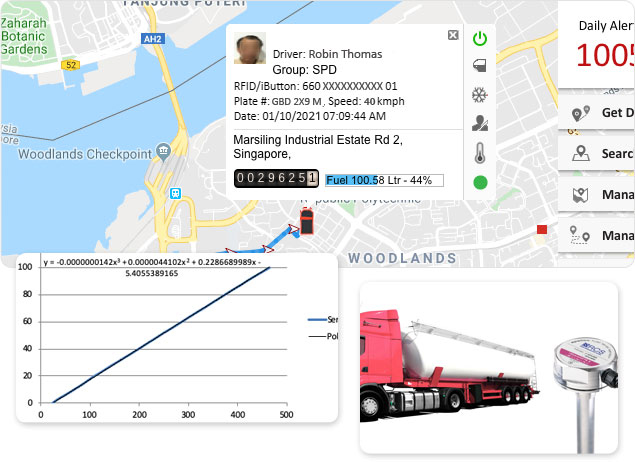
Calculate cost per kilometer: Fuel reports generated based on the data generated from fuel consumption sensor provides information on the total fuel consumed and allows the user to figure out the cost per kilometer.
Manage operational cost: Having real time data on the total fuel consumption and the cost incurred for fuel lets a fleet owner manage operational cost in a most effective manner.
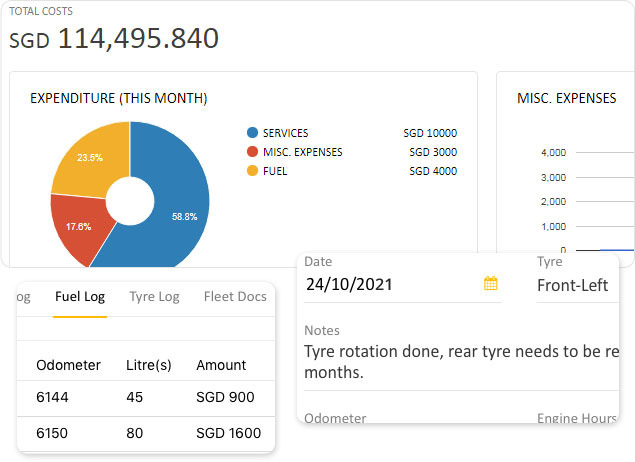
The capabilities of the fuel sensors or fuel monitoring systems currently available in the market are enormous and making the best use of the available features will allow fleet owners to have better control on fuel consumption.
